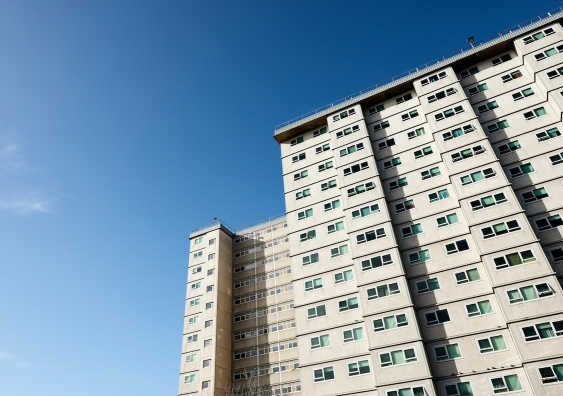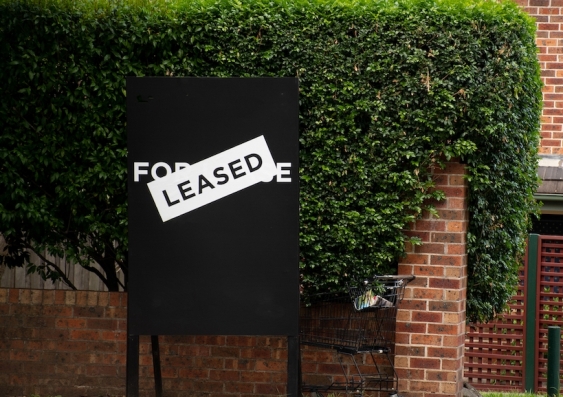The report also reveals wider cohorts, including employed people, are seeking out homelessness services for support.
The number of people sleeping rough on the streets, living in cars and in parks has surged in Australia as homelessness soars well above pre-pandemic levels across the country, according to a new report into the state of the crisis.
The Australian Homelessness Monitor (AHM) 2024, led by UNSW Sydney and the University of Queensland in partnership with Homelessness Australia, reveals a 22% increase in the number of people sleeping rough in the three years to 2023-24. In New South Wales, rough sleeping has surged by 51% since 2020, primarily driven by an increase in regional communities.
The report, the fourth in the bi-annual AHM series led by UNSW researchers, identifies escalating pressures in the rental sector as the primary drivers of worsening homelessness. The number of people assisted by homelessness support agencies and citing housing affordability stress as the main reason for needing such help rose by 36% in the three years to 2023-24.
“With growing numbers affected by rental affordability stress more and more people are being pushed towards the brink of homelessness,” said Professor Hal Pawson, lead author of the report from the City Futures Research Centre at UNSW Art, Design & Architecture. “Median rents have increased 51% since the COVID-19 pandemic, and the shortage of social housing has continued to intensify.”
Media enquiries
For enquiries about this story and interview requests, please contact Ben Knight, News & Content Coordinator, UNSW Arts, Design & Architecture.
Phone: (02) 9065 4915
Email: b.knight@unsw.edu.au
Homelessness affecting the general population
For the report, researchers conducted a novel analysis of specialist homelessness services data to dissect the flow of newly homeless people being assisted by agencies each month. They also conducted online surveys of 173 specialist homelessness services agencies and 167 councils, as well as in-depth interviews with government, NGO stakeholders and council staff across Australia.
The fastest-growing cohorts within the population affected by homelessness and newly assisted by agencies over the past six years have been Indigenous people (up 7%), and older people, with persons aged 65+ up by 31% since 2017-18.
The threat of homelessness also now looms for a broader cohort within the wider population, including more employed Australians. The proportion of employed persons receiving homelessness services has increased from 10.9% to 15.3% over the five years to 2022-23.
“Homelessness is no longer confined to the most vulnerable,” said Homelessness Australia CEO Kate Colvin. “With the housing crisis forcing working families into homelessness, this should be a wake-up call for action.”
With growing numbers affected by rental affordability stress more and more people are being pushed towards the brink of homelessness.
Homelessness support agencies at breaking point
Homelessness agencies reported a significant increase in the number of people seeking assistance in the past year, and a 12% rise in monthly caseloads since 2019–20. Demand for help that exceeds the capacity to respond is forcing agencies to focus more on homelessness crisis assistance rather than prevention activity.
In addition to the rising need for emergency help, agencies report a greater struggle to help clients secure housing. This has forced agencies to turn away growing numbers seeking help while giving priority to those already homeless rather than at risk.
“Many support agencies are at a breaking point,” Prof. Pawson said. “Staff are operating in a completely clogged system; people exit support services into the same homelessness they were trying to escape.”
As a result, the median duration of homelessness service support periods is up 44% in the five years to 2022-23, with more than three-quarters of homelessness services (77%) finding it significantly harder to secure housing for clients in mid-2024 compared to the previous year.
People are also undergoing harsher experiences of homelessness before gaining support. The number of new clients who were already homeless (as opposed to ‘at risk of homelessness’) before seeking support increased 9% over three years 2023-24 – and now exceeds 10,000 per month.
“Funding for homelessness services has failed to rise to meet demand, and the whole system is buckling under the pressure,” Ms Colvin said. “Governments need to take immediate action and deliver an emergency homelessness investment so that when people reach out for homelessness support, there is someone there to help them.”
With the housing crisis forcing working families into homelessness, this should be a wake-up call for action.
Policy responses needed to address crisis
While welcoming Rent Assistance increases and commitments to social housing investment by both federal and state governments, Ms Colvin said much more must be done to address what had become a homelessness emergency.
“We particularly need investment in homelessness prevention so we can stop people becoming homeless in the first place, as well as investment in world-renowned Housing First programs to stop people cycling in and out of homelessness,” Ms Colvin said.
The report also recommends several policy responses to address the homelessness crisis, namely expanding social housing investment to be in line with long-term needs. Accompanying measures including enhanced tenancy rights and adequate social security payment rates are also vital to address the structural causes of homelessness.
“If we want to measurably reduce homelessness at the societal level and to prevent it in the future, the only way to do so is through reducing poverty and expanding access to suitable and affordable accommodation,” Prof. Pawson said.
Key findings of the AHM 2024
- Homelessness providers reported a 12% rise in monthly caseloads since 2019-20.
- Rough sleeping increased by 22% nationally over the three years to 2023-24.
- More than three-quarters of homelessness services (77%) found it significantly harder to secure housing for clients in mid-2024 compared with the previous year.
- Increased demand for services has resulted in longer support periods, with the median duration of service support rising by 44% in the five years to 2023.
- Housing affordability stress as the main driver of homelessness increased by 36% in the three years to 2023-24.
- The average time it takes for a client to receive support has risen by 44% in the five years to 2022-23.
- The proportion of employed people accessing homelessness services rose from 10.9% to 15.3% in the five years to 2022-23.
- The fastest-growing cohorts within the population affected by homelessness over the past six years have been Indigenous people (up 7%) and older people – persons aged 55-64, up by 15%; persons aged 65+ up by 31%.








